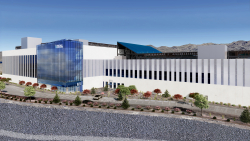The Nimitz-class has served the US Navy for half a century and continues to provide a vital power projection capability to the military.
Following a nearly three-and-a-half-year-long deployment extension, the USS Carl Vinson has finally departed the Middle East and is now transiting the Indian Ocean. Since the Houthis began launching attacks in the Red Sea, the US Navy’s presence in the region has remained steady. Carl Vinson was dispatched to the Arabian Sea following the escalation in tensions between Israel, Iran, and the United States. Now that Carl Vinson is likely transiting back to its homeport on the West Coast, USS Nimitz appears to be taking over its role in these critical waters. New satellite imagery, captured by a European Space Agency satellite this week, showcases the Nimitz Carrier Strike Group off the coast of Oman. Initially, the lead ship of her class was scheduled to do a port call in Vietnam earlier last month, but the ramp-up in violence between Israel and Iran likely deterred this stop from the schedule.
Last month, Israel launched barrages targeting the heart of Iran’s nuclear and military structure. Following an exchange of attacks between Israel and Iran, the United States launched a high-stakes air campaign targeting Iran’s nuclear facilities as part of Operation Midnight Hammer. While a ceasefire mediated by the United States and Qatar is ongoing, Houthi attacks in the Red Sea have not halted. In fact, the Iranian-backed proxy group attacked and sank two commercial ships last week in the Red Sea, resulting in multiple fatalities. US officials have not overtly commented on whether the two strikes violated the ceasefire between America and the Houthis, but clearly, the designated terror group has the willingness and capability to continue to disrupt these critical waters.
The Nimitz-class Aircraft Carrier
If the presence of US aircraft carriers in the Arabian Sea cannot deter the Houthis from striking American-linked assets in the region, perhaps nothing will. The Nimitz-class has served the US Navy for half a century and continues to provide a vital power projection capability to the military. Measuring more than 1,000 feet in length with beams over 290 feet, the Nimitz vessels are hefty. Notably, the massive flight decks atop these carriers measure over six acres in area. These nuclear-powered ships are powered by a pair of A4W reactors, which drive four propeller shafts. Where the Nimitz really shines is its aircraft-carrying and operational capabilities. Each carrier in this class can carry roughly 60 airframes, including a combination of fixed-wing and rotary-wing aircraft with up to 90 types. Able to lug 90 percent more aviation fuel and 50 percent more ordnance than older carrier classes, the Nimitz ships are virtually unparalleled in comparison to foreign navies.
The only carrier class that may have an edge on the Nimitz series is the incoming Ford-class carrier. Designed with new technologies like the Electromagnetic Aircraft Launch System (EMALS) and Advanced Arresting Gear (AAG), the Ford-class is optimized for future upgrades. So far, the lead ship of the class, USS Gerald R. Ford, is the only carrier to have launched. USS John F. Kennedy, the next in line for commissioning, is expected to join the Ford in 2027.
About the Author: Maya Carlin
Maya Carlin, National Security Writer with The National Interest, is an analyst with the Center for Security Policy and a former Anna Sobol Levy Fellow at IDC Herzliya in Israel. She has bylines in many publications, including The National Interest, The Jerusalem Post, and The Times of Israel. You can follow her on Twitter: @MayaCarlin.
Image: Wikimedia Commons.

















